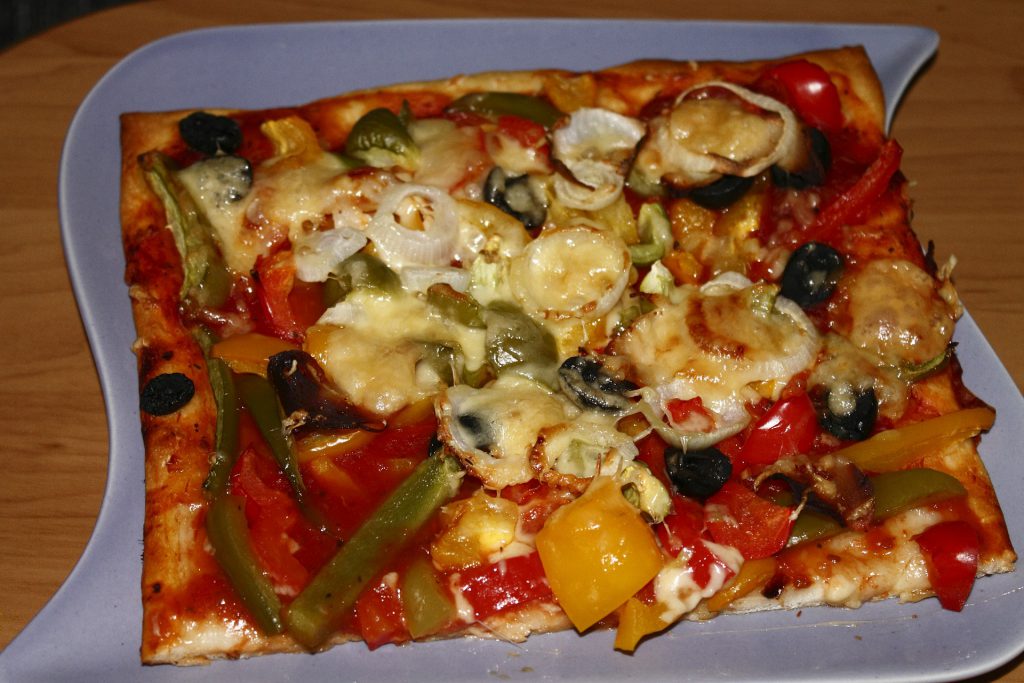Heart healthy tips to keep your

Thinking about what to do on Valentine’s Day for those who hold a special place in your heart? Take a look at the suggestions found on the American Heart Association’s Website: heart.org .
The site contains 14 practical and health conscious ideas that have more value and show a deeper love than a box of chocolates or a dozen roses ever could. The ideas are listed below. See what you think.
When you’ve finished reading, be creative! Come up with a 15th idea to show your Valentine he/she’s extra special. Enjoy the read! (Note: Hovering over the printed words or phrases in blue will take you to sites with additional ideas and information.)
- Rather than tempting your beloved with sweets, consider a gift that has more permanence. Search for a poem that describes your feelings and write it on beautiful paper for a handmade Valentine.
- Quality time is one of the most meaningful gifts. Bundle up and plan an active outing such as sledding, ice skating, gathering wood for a fire, or if you’re feeling adventurous, visit an indoor rock wall.
- If your kids are having a Valentine’s Day party at their school or day care, instead of sending candies, consider raisins, grapes, whole-grain pretzels, colored pencils or stickers as tokens of their friendly affection.
- Cooking at home is an excellent way to control what and how much you eat. Take a date to a local cooking class to practice your skills or learn a new technique.
- Prepare a romantic candlelit dinner at home using one of our heart-healthy recipes.
- Give to one another by giving back. Ask a date to volunteer with you at a local organization. Giving back is a healthy habit that can boost your mood and help beat stress.
- Use this day as an opportunity to tell your loved one how important they are to you, and share ways that you can support each other’s health and wellness. Get started by taking the My Life Check Assessment.
- Craving something sweet? Gift a beautiful fresh fruit basket to your loved one instead of giving sweets with added sugars.
- Sharing is caring – if you go out for a romantic dinner date, order one entrée to share. Many restaurant servings are enough for two – splitting will keep you from overdoing it.
- Don’t forget to love Fido, too! Give your pet a Valentine and remember to walk or exercise them daily –getting active with your pet will benefit your health and your bond with your pets.
- Take it slow – if you receive a luxurious box of chocolates from your sweetie, stick it in the freezer and enjoy in moderation over the next several weeks.
- Take a long, romantic walk with your beloved – and try to make it a regular habit. Aim for at least 150 minutes of moderately intense physical activity each week to help keep your heart healthy. You can reach this goal by walking briskly for at least 30 minutes five days each week.
- Check out our tips for healthier preparation methods for cooking.
- Rekindle an old flame – try preparing one of your sweetie’s favorite recipes in a healthier way. These healthy substitutions can help you cut down on saturated fats, trans fats, salt (sodium), and added sugars, while noticing little, if any, difference in taste.ENJOY! Emily
Eating Together!

How many of you aim to have at least a few meals of the week together as a family?
These days schedules of both parents and children leave almost no time for regular dinners together at the table. Between soccer practices, dance rehearsals, playdates, and other scheduling conflicts, family mealtime can seem like a thing of the past.
Did you know that research shows that having a meal together as a family at least four times a week has positive effects on child development? Family dinners have been linked to a lower risk of obesity, substance abuse, eating disorders, and an increased chance of graduating from high school. Source: http://solutionsforyourlife.ufl.edu/
If you are still looking for some inspiration, here are some more benefits of eating a meal together as a family.
- Dinner table provides an opportunity for conversation and to reconnect as a family. By engaging your children in conversation, you teach them how to listen and give them with a chance to express their opinions.
- Family mealtime is the perfect opportunity to display appropriate table manners, meal etiquette, and social skills. Be a good role model and lead by example.
- Meals prepared and eaten at home are usually more nutritious and healthy. They contain more fruits, vegetables, and dairy products along with additional nutrients such as fiber, calcium, vitamins A and C, and folate.
- The sense of security and togetherness provided by family meals helps nurture children into healthy, well-rounded adults. Children who eat dinner with their family are more likely to understand, acknowledge, and follow the boundaries and expectations set by their parents.
- The home cooked meal cost 2-4 times less than the meals purchased outside the home. You save your time and money by not make going out to eat at a restaurant and making short trips to the grocery store.
- Family mealtime is a great place to introduce new food to the kids. It greatly helps the picky eater. Try to make the mealtime a cool, calm and positive experience for the children. Avoid- criticism and over correction.
ENJOY!!
Neha
Vegetable packed pizza

As a parent, I am always looking for new and efficient ways make my kids eat more veggies because eating greens has many health benefits. Vegetables are the powerhouse of vitamins, minerals, and other healthy compounds which boost their immune system and help them to fight off the cold, flu, and other infections. Most vegetables are low in calories and fat but high in dietary fiber. The high fiber helps children stay full longer and be able to concentrate more in the school. It also aids in having a healthy digestive system.
So how much of veggies your child should be eating? Go with More Matters! Eating fruits and vegetables in a rainbow of colors will provide a broad range of nutrients that they need. You also go with the MyPlate icon from the USDA recommendation to fill HALF your plate with colorful fruits and vegetables at every meal!
Getting kids to eat more veggies doesn’t have to be a fight. Here are some creative ways to introduce and serve them.
Get them involved – Children are more invested in a meal if they help with its preparation. Take your kids with you for grocery shopping and allow them to pick a new vegetable to try. At home, involve them in the meal preparation. Letting them clean carrots, snap beans, mix the dressing and set the table gives them a sense of pride and makes them more enthusiastic and cooperative at meal time.
Make Vegetable look attractive- Children often prefer foods served separately. So, rather than mixed vegetables try serving two vegetables separately. You can add color to salads by adding baby carrots, shredded red cabbage, or spinach leaves. Try decorating the plates or serving dishes with vegetable slice
Dip it– If your kids don’t eat vegetables, experiment with dips. Many vegetables taste great with a dip or dressing. Try a low-fat salad dressing with raw broccoli, red and green peppers, celery sticks or cauliflower.
Enforce the “one bite rule”- Research shows the “one bite rule” where the child has to try at least one mouthful of a disliked food when it is served work wonders with picky eaters. You have to make sure to expose a different kind of vegetables for at least 8-10 times before they begin to rate it more favorably.
Don’t force them to finish- Never fight and punish your child for not eating her veggies as this will create a negative meal experience and the child will learn to associate food with the bad feeling. You don’t have to be a short-order cook but try not to start a fight.
Be a good role model- Children have a natural tendency to imitate, so be a good example of healthy eating! Eating with them as a family, and if you are eating a vegetable at dinner, your child is likely to take notice and do the same, well maybe not immediately!
Here is recipe for you to try with your kids:
Technicolor Vegetable Pizzas
Preparation time: 20 minutes
Rose colored glasses won’t be needed to appreciate the variety of colors and blend of tastes offered by these easy to make individual pizzas.
- 3 cups frozen mixed vegetables with mushrooms
- 5 slices Italian bread (1 oz. slices; each ~ 1” thick and 5” long)
- 1 tablespoon olive oil
- ½ cup prepared pizza sauce
- 1 cup finely chopped tomato
- ½ cup very finely diced onion
- 1 tablespoon dried oregano leaves
- 1 teaspoon garlic powder
- 2 ½ tablespoons grated Parmesan cheese
Instructions:
Pre-heat oven to 350º F and place oven rack in middle-high position. Microwave frozen vegetables, then pat dry. Brush all bread slices lightly with oil and spread each with ~ 1½ tablespoons sauce. Combine all vegetables in a medium-sized bowl. Carefully spoon vegetable mixture equally onto bread slices. Sprinkle with oregano and garlic powder and then with cheese. Bake about 5-7 minutes, until bread is brown on the edges and all vegetables are piping hot. Serve immediately.
Serves: 5
1 Cup of Vegetables per Serving
Fruit and/or Veggie Colors: Green, White, Yellow, Orange, Red [What’s This?]
Nutrition Information per Serving: calories: 182, total fat: 5.0g, saturated fat: 1.1g, % calories from fat: 24%, % calories from saturated fat: 5%, protein: 6g, carbohydrates: 29g, cholesterol: 2mg, dietary fiber: 5g, sodium: 339 mg
Each serving provides: An excellent source of vitamin A and a good source of vitamin C, folate and fiber.
Source: http://www.fruitsandveggiesmorematters.org/dipping-vegetable-increases-vegetable-intake-in-children
Enjoy!
Neha
Hot Chocolate weather is upon us, drink up!

Warm drinks are a must have for me and my family in the cold winter months, but all those empty calories can add up quickly! According to the National Health and Nutrition Examination Survey, Americans consume 20 teaspoons of added sugars daily. Keep in mind that the American Heart Association recommends no more than 6 teaspoons of added sugar for women and children and 9 teaspoons for men daily.
Hot chocolate can be a great, calcium-rich drink for all ages. This family favorite does not have to contain loads of sugar to taste great, try cutting back on the sugar and add more flavor! Flavor your next cup with vanilla, peppermint or my favorite, chai tea! You can do this by adding in spices or for an easy and flavorful trick, try steeping a tea bag in your hot chocolate. What sounds better than a vanilla chai tea hot chocolate? All the fancy flavors without the extra cost or sugars! Visit heart.org for more tips on how to cut back on added sugars for you and your family.
Healthy Hot Chocolate
Ingredients:
- 1 cup, plus 1-2 tablespoons skim or 1% milk
- 2 teaspoons unsweetened cocoa powder
- 1 teaspoon sugar (or sweetener of choice)
- ¼ teaspoon vanilla extract
- cinnamon, optional
Directions:
- Place milk in a small pot over medium low heat.
- Meanwhile, place cocoa powder, sugar, and extra tablespoon of milk in a small bowl. Whisk until a paste/thick mixture forms and powder is absorbed.
- Whisk cocoa mixture into milk mixture. Heat till hot but not boiling. Stir in vanilla extract.
- Pour into a mug and sprinkle with cinnamon, if using.
Recipe adapted from: http://thechiclife.com/2014/02/healthy-hot-chocolate-clean-eats.html
Cheers!
Megan
Megan is the EFNEP Program Assistant in NC State Extension-Orange County Center
Homemade gifts this season for lower costs

Gift giving for any occasion can often be expensive, especially when you purchase several gifts at one time. I actually began to make homemade food gifts that were not only made from the heart but were healthy for the heart too! I was able to remember those special special neighbors, church friends, and teachers with gifts that were lower in cost and higher in nutrition.
Some of my favorite homemade gifts that don’t require refrigeration include: vegetarian bean soup; peppermint hot cocoa; flavored teas, and mint body scrub. All of these items are placed in jars decorated with fabric and/or ribbon that coordinated with the occasion.
My children began getting involved with making gifts for their grandparents and teachers. Among their favorites were: homemade cookbooks, no-salt seasonings; spiced teas, and healthy snacks in a jar. They loved to decorate the container or package too and were so very proud of giving a gift from the heart.
So don’t let the holidays, birthdays, or other gift giving occasions stress you. Start gathering ideas for homemade gifts and get your children Involved too. All of you will enjoy giving a gift that you made and it will mean so much to those on the receiving end.
For more ideas, check here: http://www.clemson.edu/extension/hgic/food/nutrition/nutrition/dietary_guide/hgic4091.html
Judy